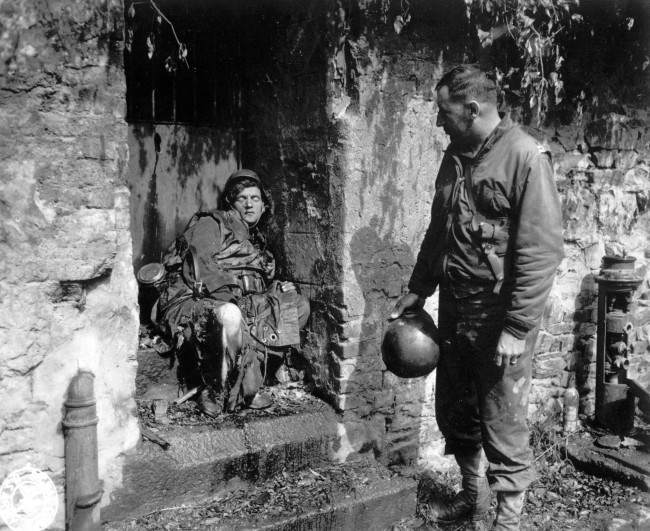The D-Day invasion wasn’t all about the winners. It was also about the losers.
We’ve seen the preparations for the Invasion of France. We’ve seen the photos of the Allied forces storming the Normandy beaches. We’ve seen the brave reporters who risked life and limb to record the fighting.
But what about the Germans? Well, they weren’t all Germans. In this collection of photos of the aftermath, we see Japanese, Poles, Czechs, Russians, Italians, Turks and Mongols wearing the Nazis colours. Some had been enslaved. Forced to fight. Others were collaborators, who wilfully fought for the Nazis. After the invasion, all were prisoners. Or dead.
These photos are, of course, the ones the men from the Associated Press were allowed to send back for publication. Blood and gore are in short supply. Retribution is absent. But let’s not dwell on what we don’t see. We should look at what we can see.
Every face tells a story.
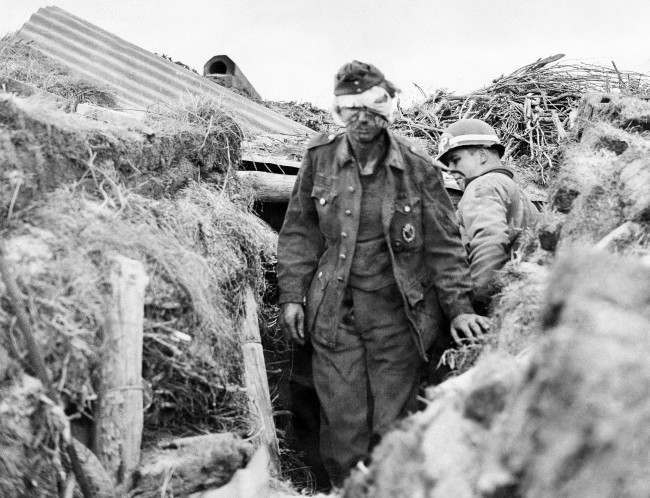
Badly battered German gunner of a gun nest on beach of northern France staggers out of underground nest under watchful eye of a burly U.S. Army M.P. on June 10, 1944.(AP Photo)
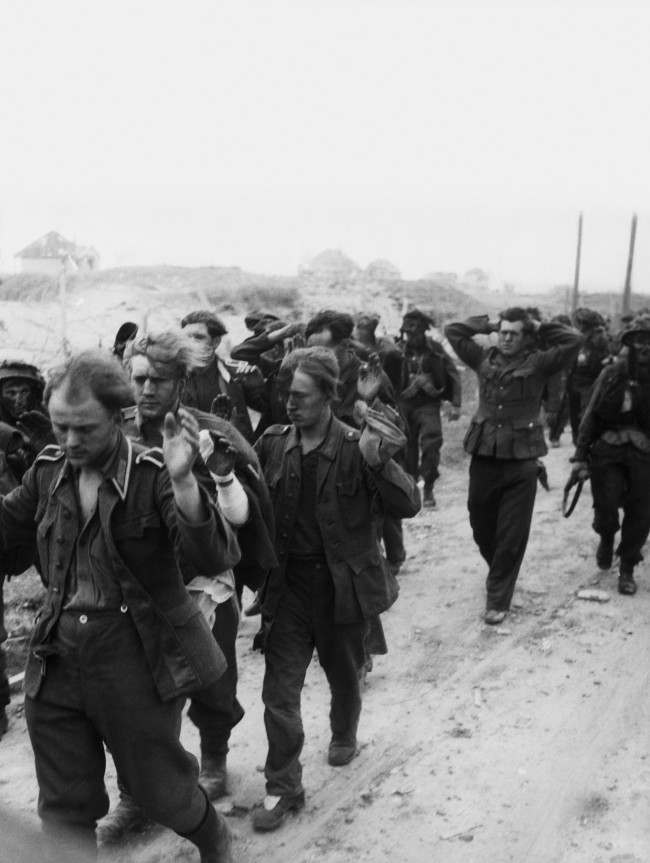
Badly battered German gunner of a gun nest on beach of northern France staggers out of underground nest under watchful eye of a burly U.S. Army M.P. on June 10, 1944.(AP Photo)
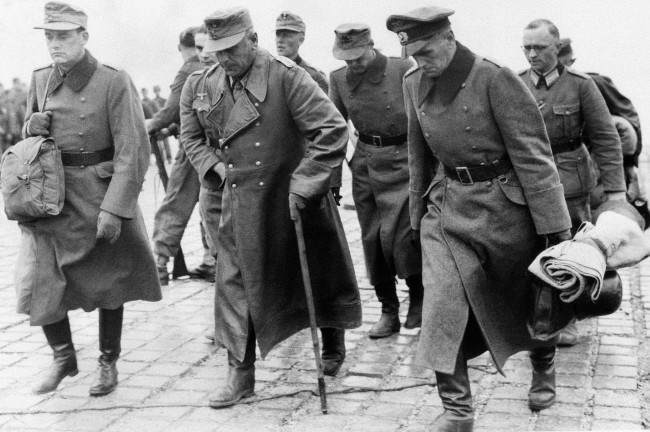
German officers, captured on the beaches of Normandy in France, hang their heads dejectedly as they arrive on June 10, 1944 in England en route to prisoner of war camps. (AP Photo)
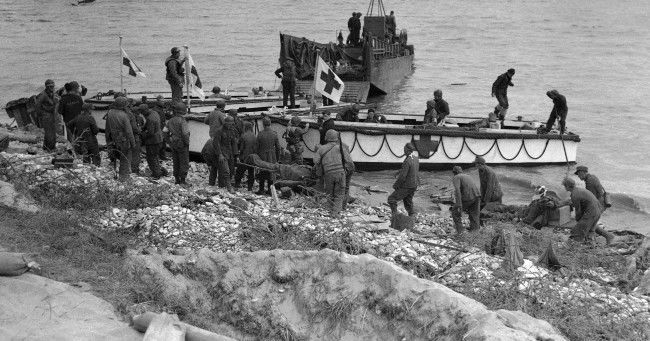
German prisoners help evacuate some of their own wounded, and are seen being put on board Red Cross boats to be taken out to the mother ship, standing by off the beachhead area in Normandy, France on June 10, 1944. (AP Photo)
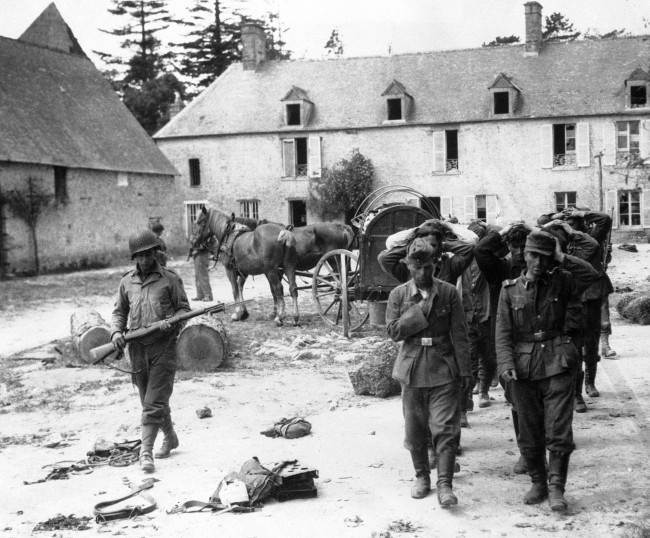
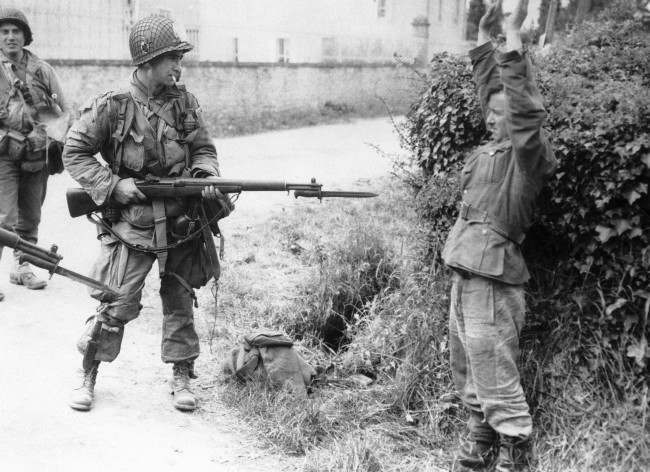
An American paratrooper holds a Nazi prisoner at the point of his bayonet, one of many incidents during the American advance into Normandy, in France, on June 10, 1944. (AP Photo

Some of the first German prisoners captured in the invasion of Normandy on June 9, 1944. (AP Photo)
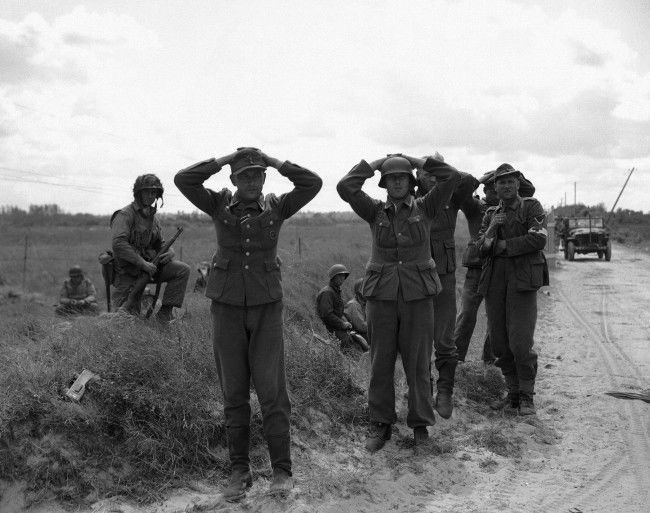
Some of the first German soldiers to surrender to the Americans during the battle of the Normandy beaches on June 9, 1944. (AP Photo)
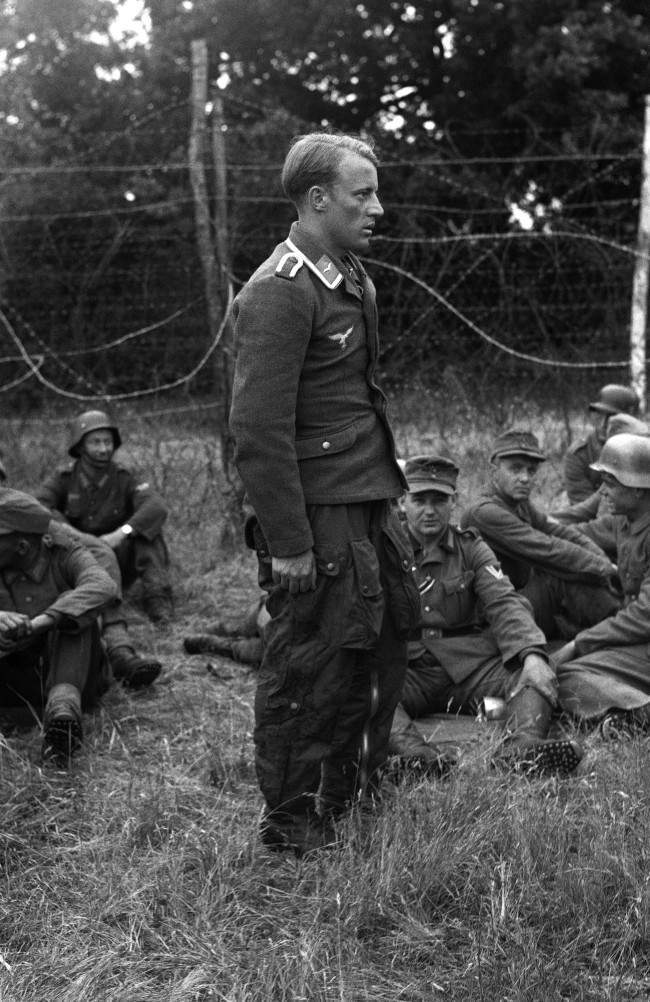
The first Nazi airman to be shot down in the invasion area stands dejected amongst other prisoners at a camp somewhere in England, on June 9, 1944. (AP Photo)
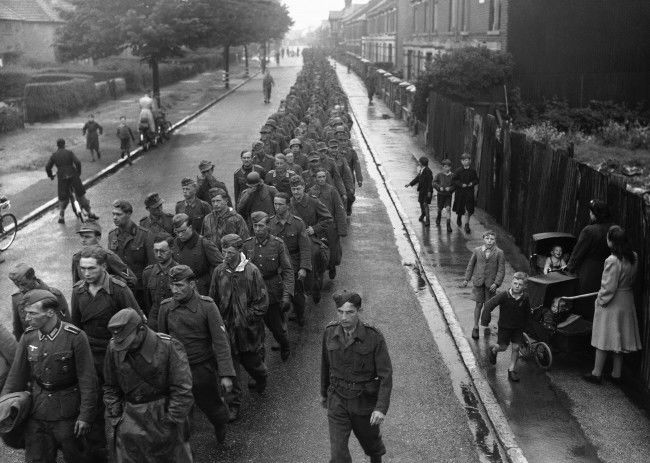
A steady stream of German prisoners is pouring into this country from the battle of Normandy. German prisoners, captured on the beaches of Normandy, march through a street, somewhere in England, on June 9, 1944, after disembarkation at an English port. (AP Photo)
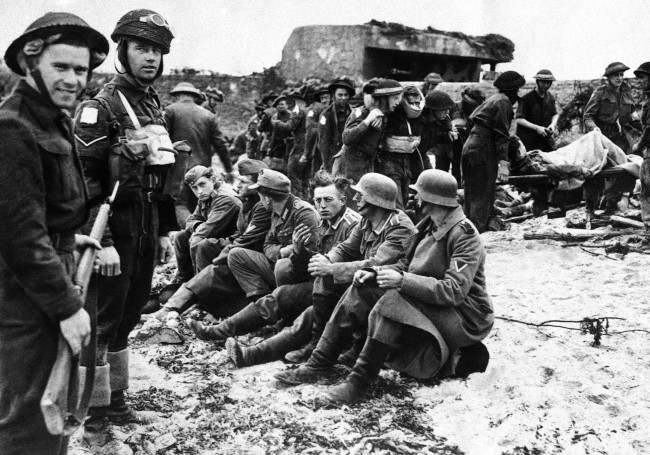
Canadian invasion troops stand guard over the first German prisoners captured during the assault on France by Allied forces on June 6, 1944 along a 100 mile front on the Normandy coast between LeHavre and Cherbourg. Wounded soldiers are being treated, in the background. At extreme bear are German coastal fortifications of masonry, silenced by the invaders. (AP Photo)
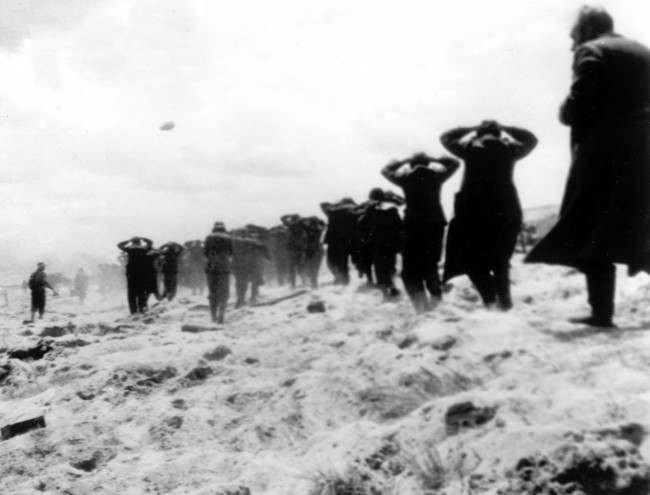
German prisoners of war are led away by Allied forces from Utah Beach, on June 6, 1944, during landing operations at the Normandy coast, France. (AP Photo)
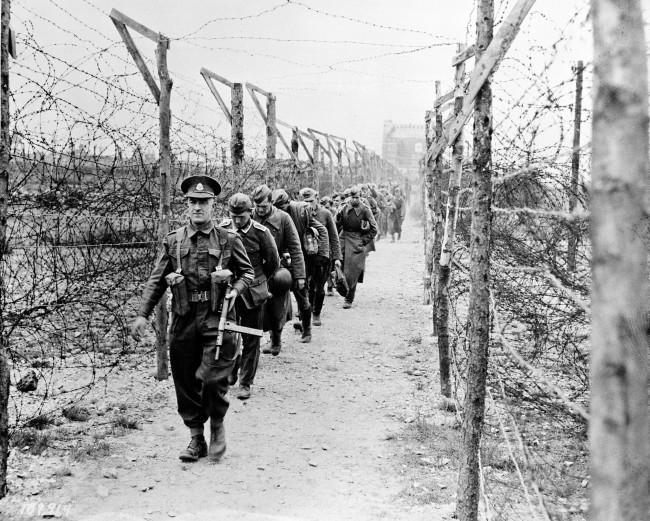
Led by a British soldier, a line of German prisoners of war is marched along a barbed-wire barricaded lane as they arrive at a POW camp somewhere in England, in June 1944, following their capture in Allied assault operations on the French Normandie coast. (AP Photo)
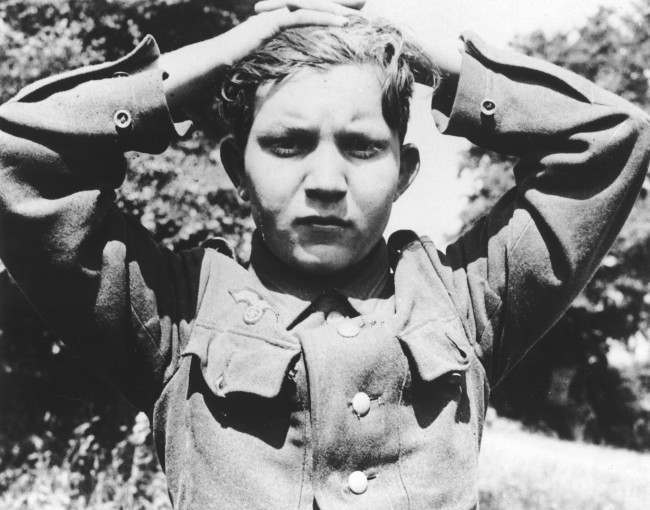
A 16-year old German soldier has his hands clasped over his head as he is taken prisoner with thousands of other Wehrmacht soldiers, at Cherbourg, France, during the Allied Normandy invasion in June 1944. (AP Photo)
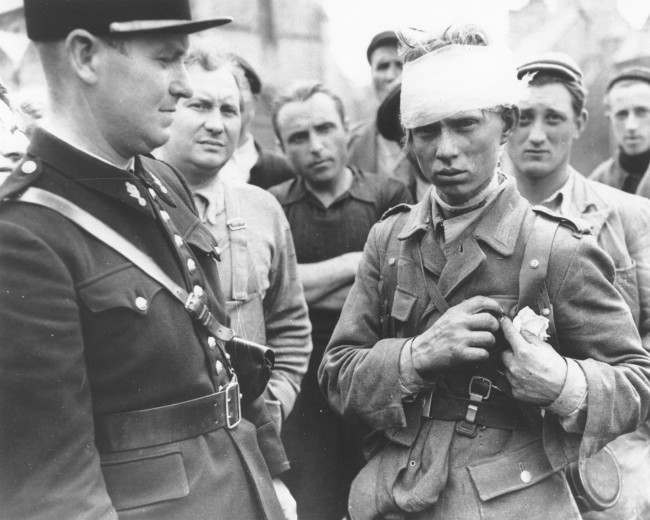
A wounded German soldier who surrendered to the Allied invasion forces, stands surrounded by a crowd of civilians and a French gendarme on the left, in Barneville in the Normandy region, June 1944. (AP Photo)
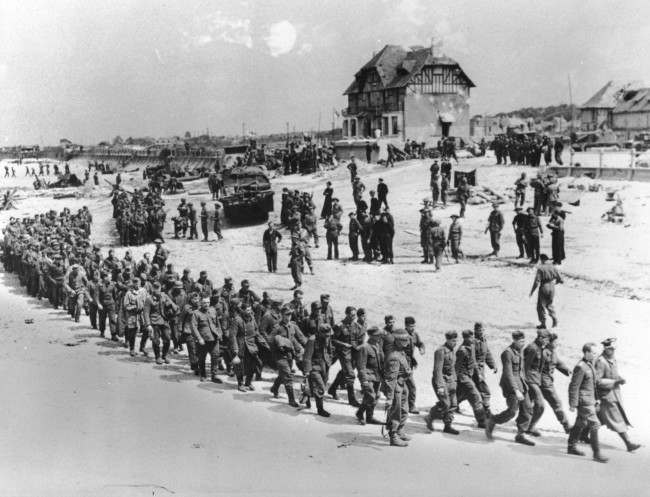
German prisoners of war, captured during the Allied Normandy invasion, are marched to the ships that bring them into captivity in England, in June 1944, at Bernieres-sur-mer, France. (AP Photo)
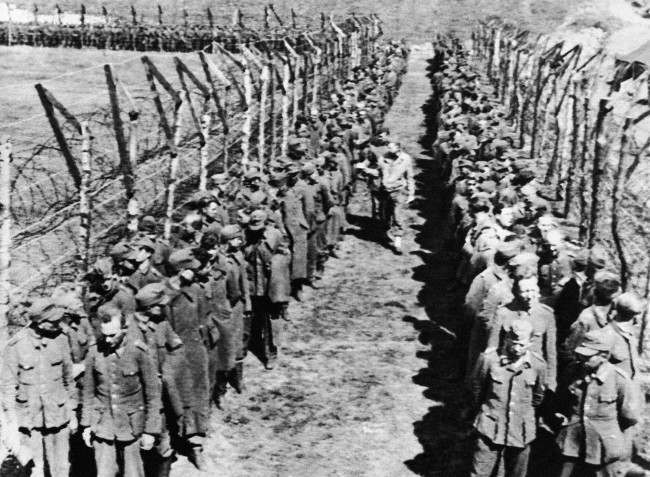
Two long double lines of German prisoners are checked by Allied officers, center, as they stand beside barded wire fences of compound in England, June 12, 1944, after their capture on the Normandy coast of France. (AP Photo
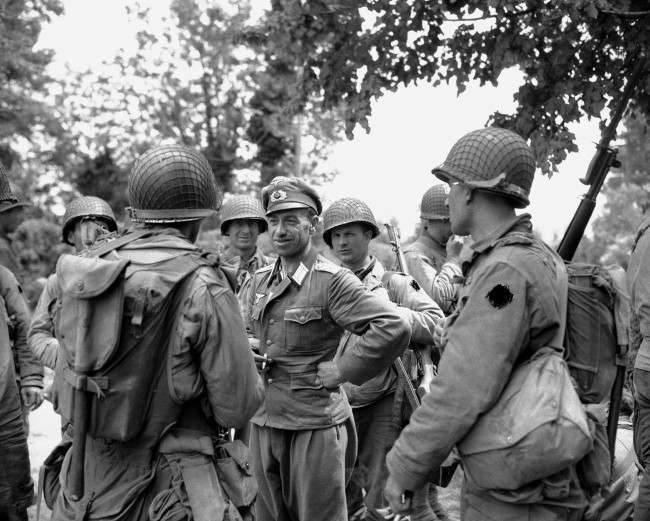
A German officer smiles as he is interrogated by American soldiers who landed on the beaches of Normandy, France on June 12, 1944. (AP Photo/Peter Carroll)
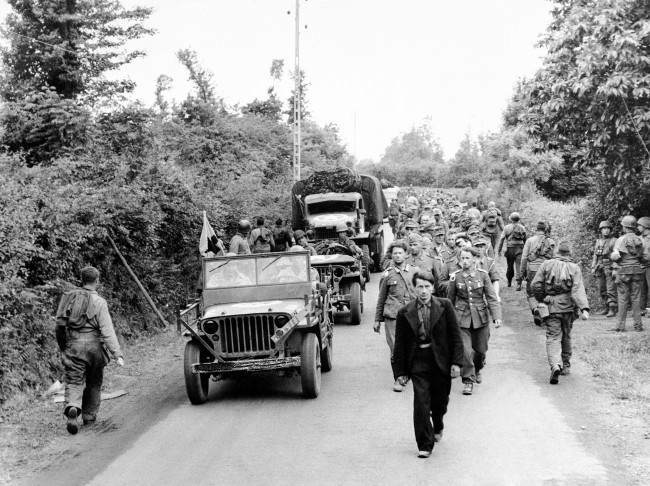
American troops moving up to the front lines, right, pass a long line of German prisoners marching back to a holding camp prior to being shipped out of France, on June 12, 1944. (AP Photo)
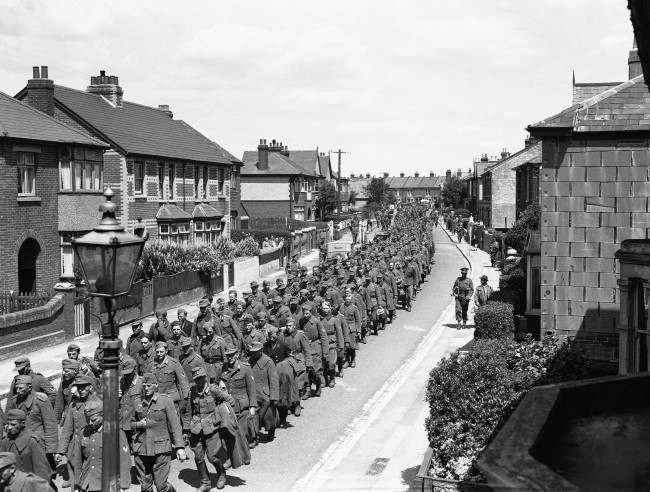
More than six hundred German prisoners, the largest number yet to reach this country since the opening of the second front, arrived in England on June 12, 1944. Here they are seen being marched under guard to a prisoners-of-war camp. (AP Photo)
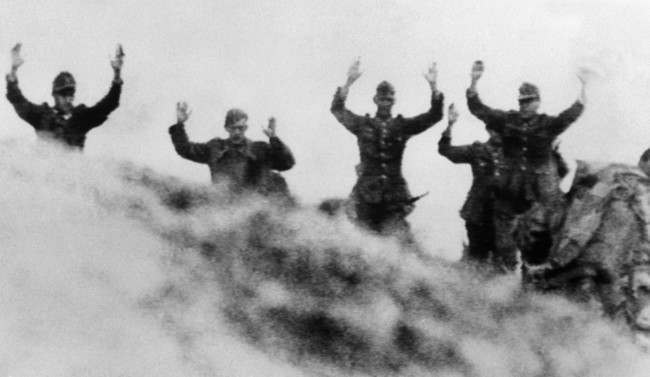
German soldiers, former Herrenvolk, come over the crest of a hill with their hands over their heads in surrender to American troops during the battle for the Norman beachhead in France on June 11, 1944. (AP Photo)
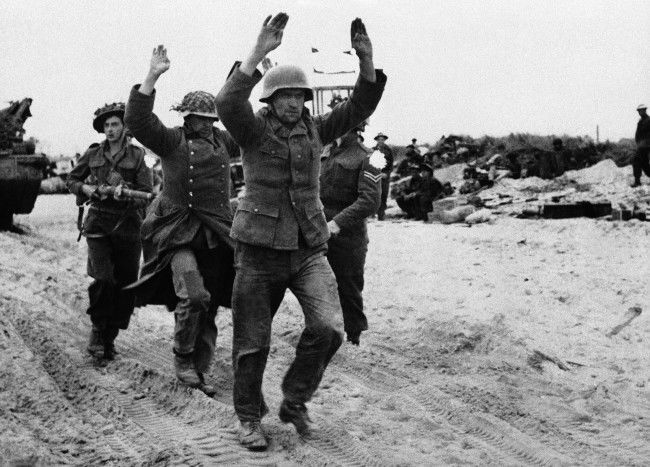
First the troops wade ashore from landing craft. Then the gradual development of land operations some of these early stages. German prisoners being marched along beach on June 11, 1944. (AP Photo)
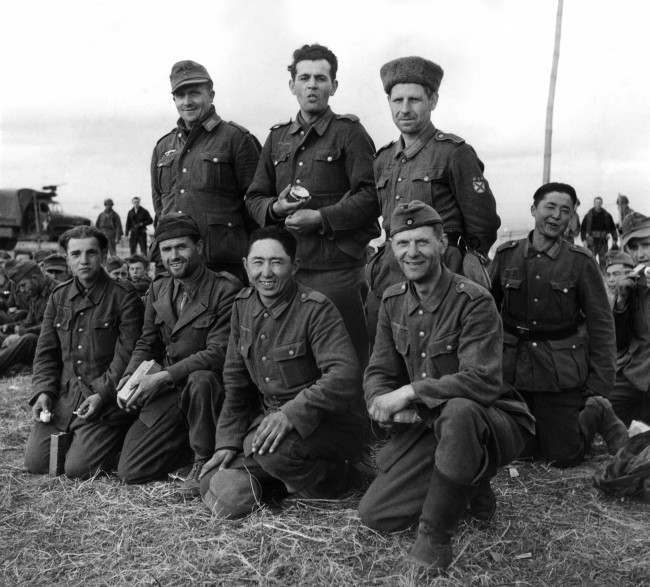
Not all of the GI Army prisoners taken on the battlefields France are stalwart, Blonde Aryans who we born to rule the world. Not quite so exclusive these days, the Herrenvolk hob-nobbing with men of all races – any as a matter of fact, who can carry a gun Adolf. Among the prisoners captured in France on June 15, 1944, were: (left to right) front row; Yugoslav; an Italian; a Turk; a Pole; a German; a Czech; a Russian who forced into the army when the Nazis his town; and a Mongol. (**Caption information received incomplete) (AP Photo)
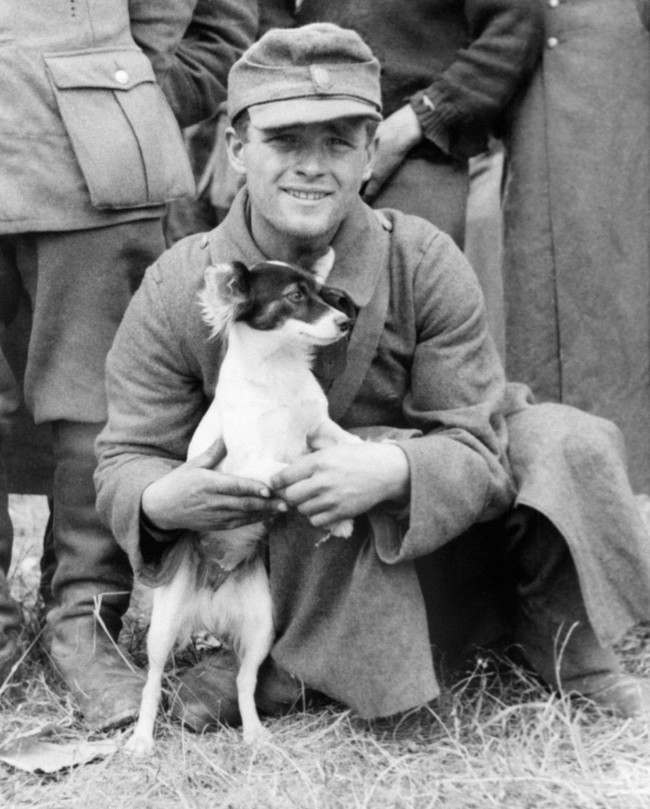
This German soldier managed to keep his mascot dog when he was captured, with other members of his company, by allied troops in the beachhead sector in France on June 15, 1944. (AP Photo)
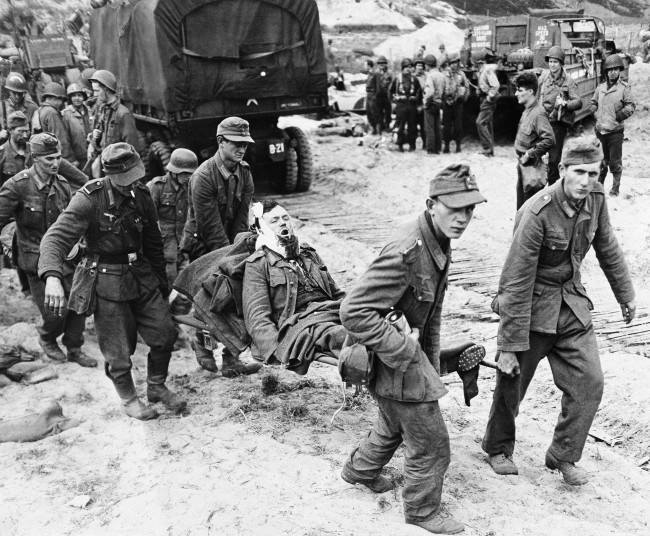
German prisoners of war, in the battle for France, carry a wounded comrade to an evacuation area on the beach where landing craft will speed them out to ships in the English Channel for treatment by Allied doctors on June 15, 1944. (AP Photo)
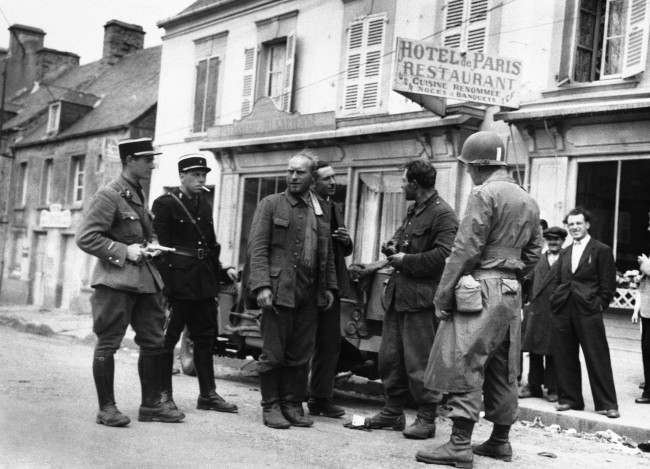
Two German soldiers surrendered to a solitary American soldier in Barneville, on the west coast of the Cherbourg peninsula, in France, on June 20, 1944. The Americans pushed through the town like a whirlwind after the Germans who are now in full retreat for Cherbourg. The prisoners were turned over to the local police and lodged in the town’s jail. (AP Photo)

An American soldier gives a drink of water to a wounded German prisoner lying on a stretcher somewhere in the Normandy, France on June 19, 1944, battle area through which the allies advanced. (AP Photo)

German prisoners captured by the FFI at Maizy sur Oise, France on Sept. 18, 1944 including officers of the Luftwaffe, stand in formation prior to being transferred to a detention area. Many of them are shoeless. (AP Photo)

A stretcher bearer attends to a wounded German near the village of Lingevres, France on June 16, 1944, where a fierce battle was fought. (AP Photo)
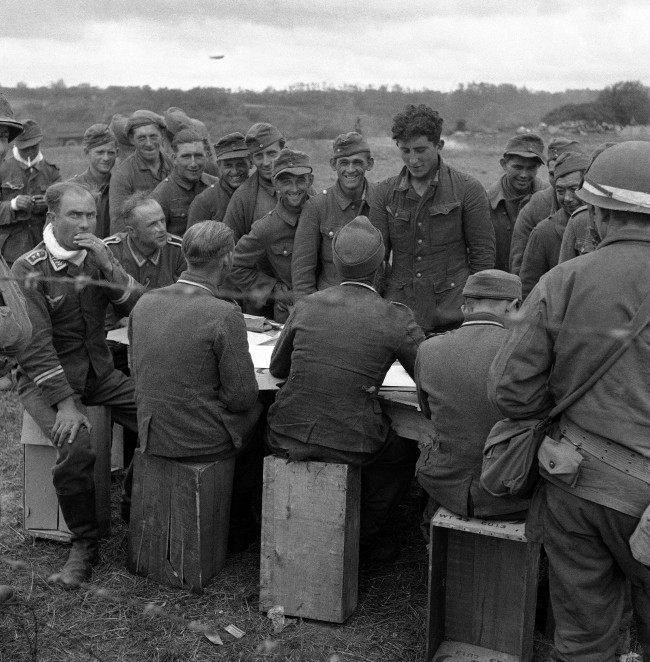
German soldiers, captured by Allied Armies on the Normandy beachheads in France on June 16, 1944, are checked by fellow prisoners. (AP Photo/Jack Rice)
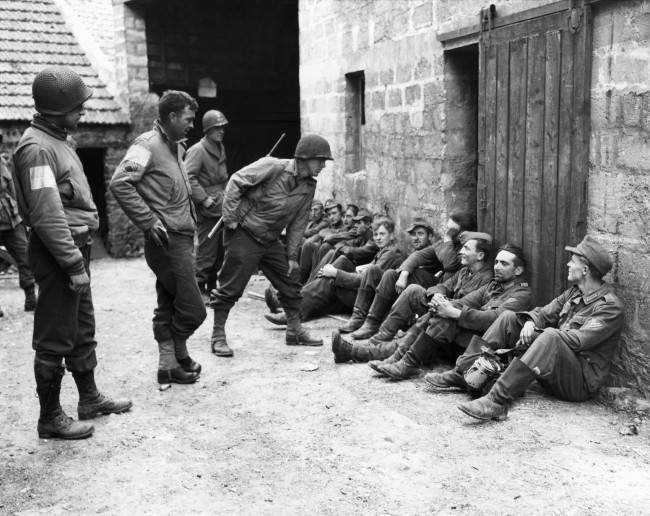
Three American soldiers, members of an airborne infantry outfit who were captured and held by the Germans near Orglandes, France on June 25, 1944, look at some of their former captors, now held by their comrades who captured the village and released the Americans. The soldiers are from left to right are front: Pfc, James C. Bishop, Dallas, Tex, Pvt. Joseph Burnett, Huntington, W.Va. and Pfc. (AP Photo)
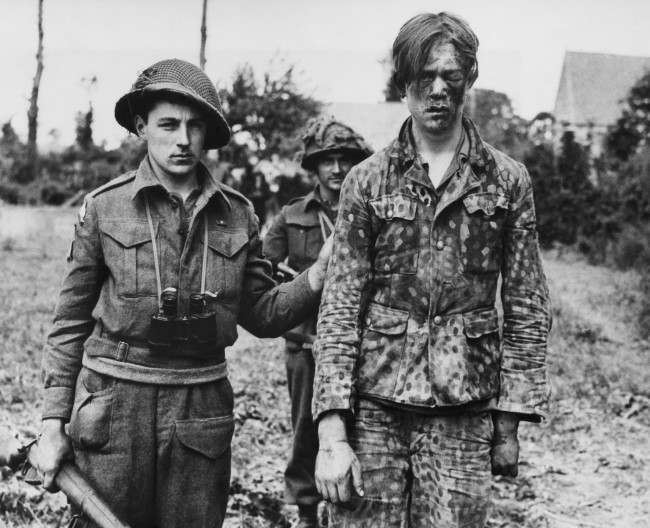
A wounded German prisoner, wearing a camouflages uniform, is escorted to an allied first aid station in France on June 21, 1944, by Pvt. Gaston Daisneault, Chateauguay, Quebec, (left) and Pvt. Robert Bonneau (center, background), of Lyster, Quebec. (AP Photo)

This Japanese, captured while serving in the German army in France on June 21, 1944, gives his name and serial number to an American as he files along with other German prisoners rounded up in the Normandy coast area. (AP Photo)
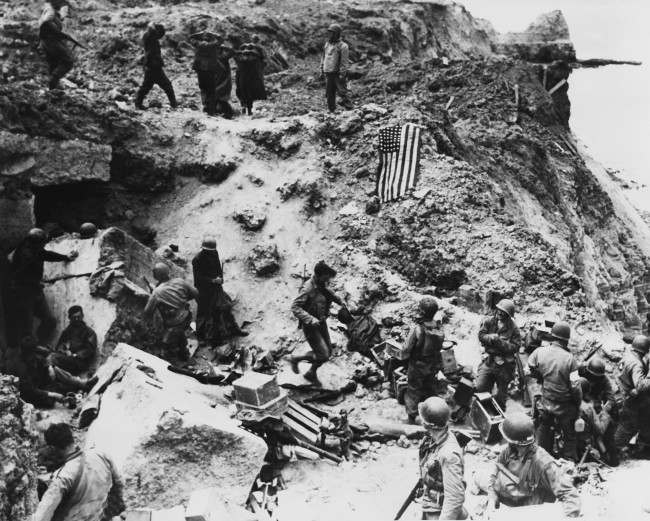
Hands clasped over their heads, a group of German prisoners (top) is herded down a slope on the French coast on June 21, 1944, to a ship to take them to a prison camp, as American command post bustles with activity below. American flag on ground provides protection against shelling from allied boats and bombing by allied planes. (AP Photo)
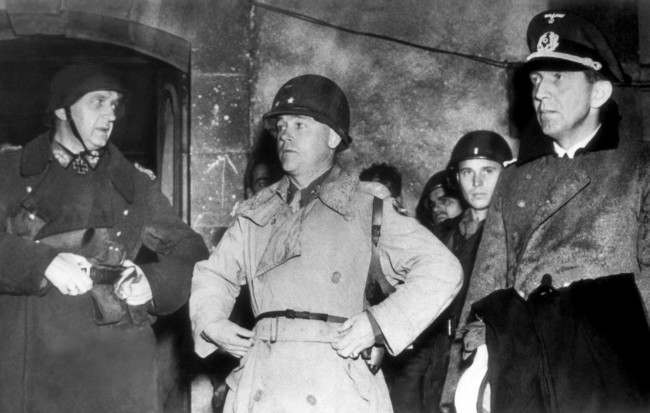
Commander of the German forces which capitulated at the French port of Cherbourg, France, stand with their conqueror on June 30, 1944, after giving up the fight. From left to right are: Lt. Gen. Carl Wilhelm von Schlieben, German garrison commander; Maj. Gen. J.L. Collins, of the U.S. Seventh Corps which took the city; and German Admiral Hennecke, who had been in charge of the port’s sea defenses. (AP Photo/Peter J.)
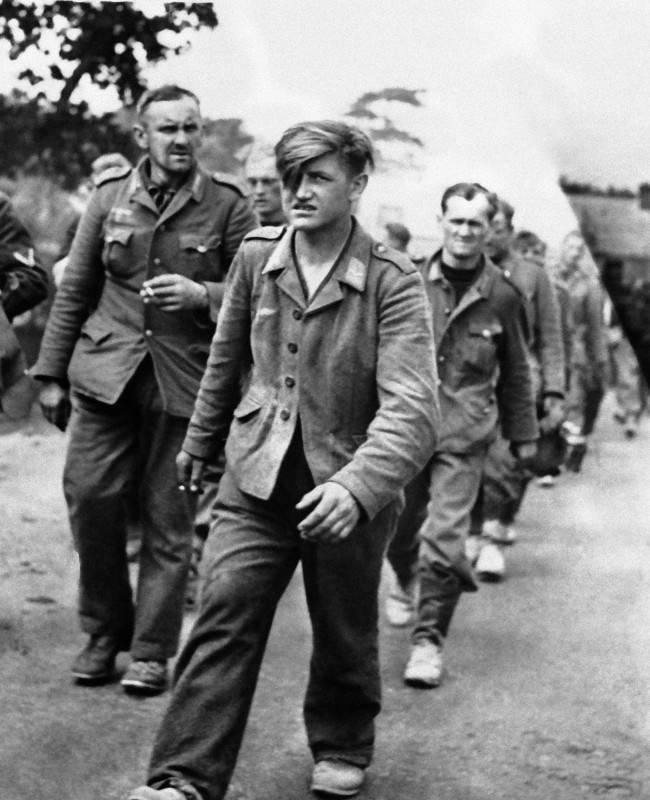
A column of German prisoners, captured in fighting for the outer defenses of Cherbourg are marched to a prisoner of war stockade behind the lines on June 29, 1944. (AP Photo)
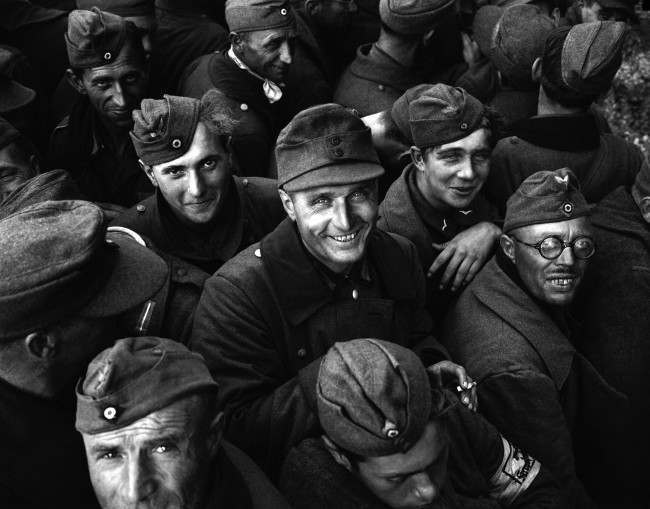
A study of German prisoners taken by the Americans in their drive on Cherbourg, France on June 28, 1944. The fall of Cherbourg ends what General Eisenhower refers to as the second phase of the campaign of liberation. (AP Photo/Laurence Harris)
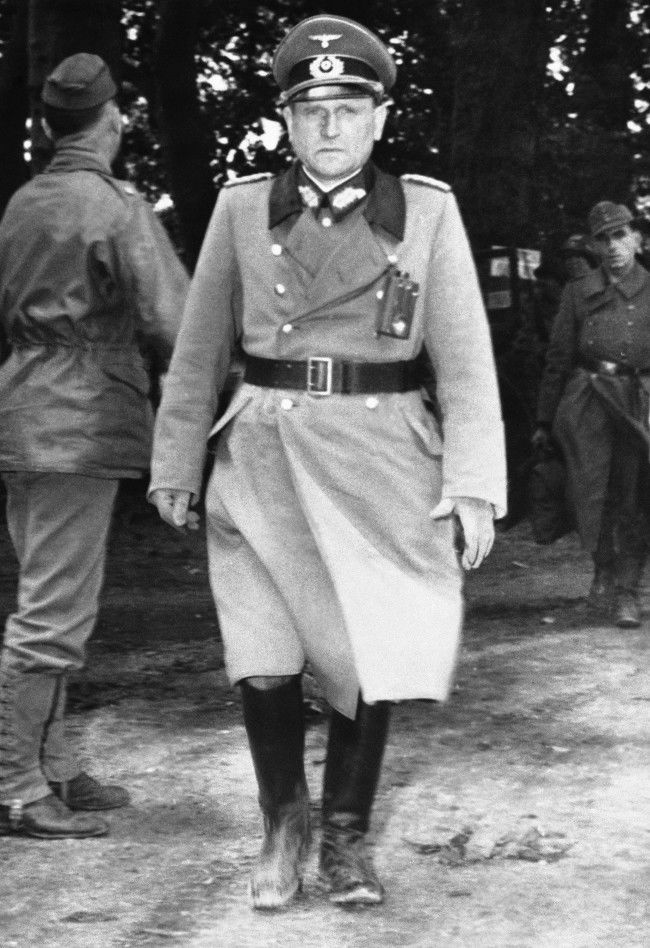
General Major Robert Sattler, Deputy German Commander of the Fort Du Roule, at Cherbourg, France on June 28, 1944, after his capture. (AP Photo)
Date: 28/06/1944
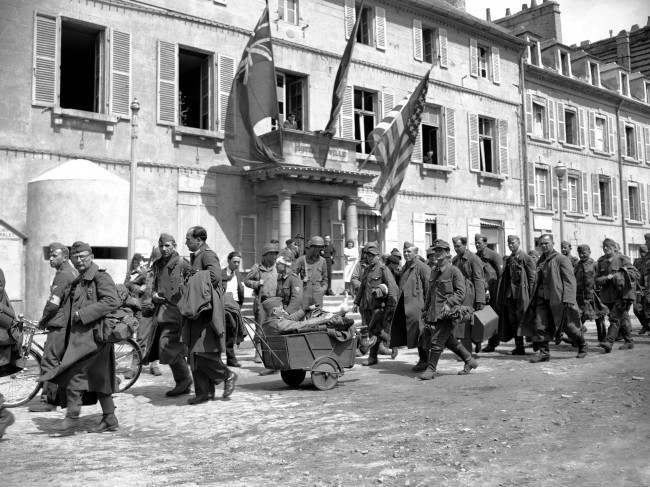
German prisoners file past the Town Hall at Cherbourg on their way to a stockade on June 28, 1944. One wounded prisoner is taken in a small truck. General Eisenhower referred to the fall of Cherbourg as the End of the second phase in the campaign of liberatio. (AP Photo)
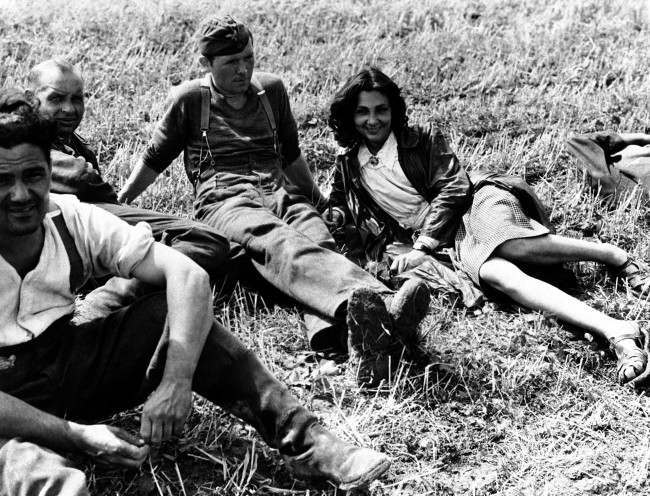
This French girl, who was engaged to a German soldier, refused to leave him even after he was captured and confined in a prisoner of war stockade on August 26, 1944. (AP Photo)
Would you like to support Flashbak?
Please consider making a donation to our site. We don't want to rely on ads to bring you the best of visual culture. You can also support us by signing up to our Mailing List. And you can also follow us on Facebook, Instagram and Twitter. For great art and culture delivered to your door, visit our shop.



